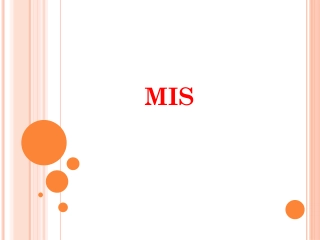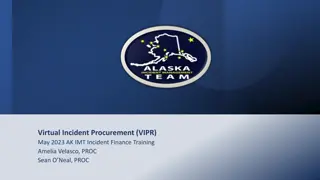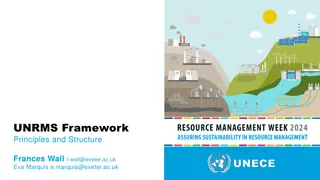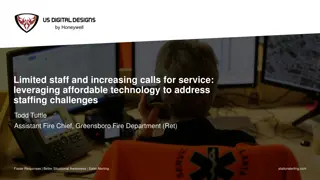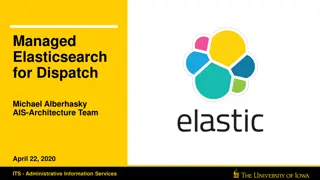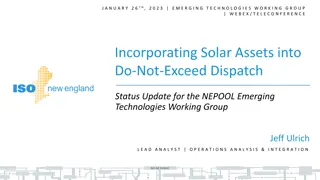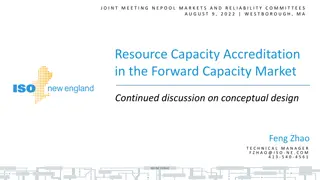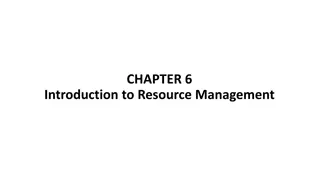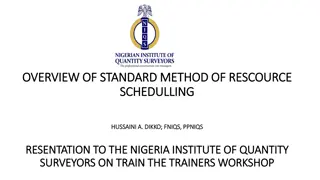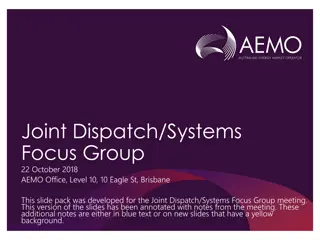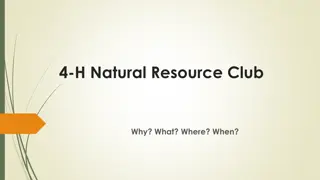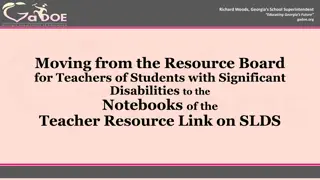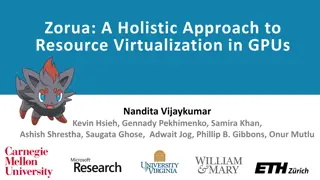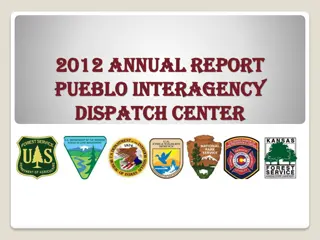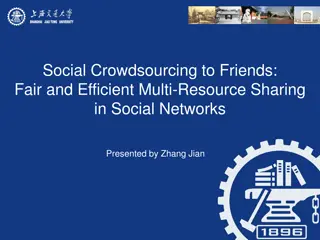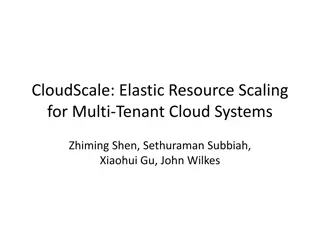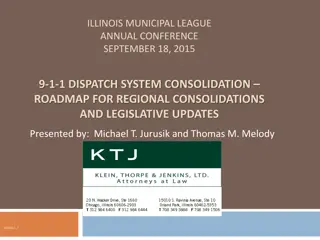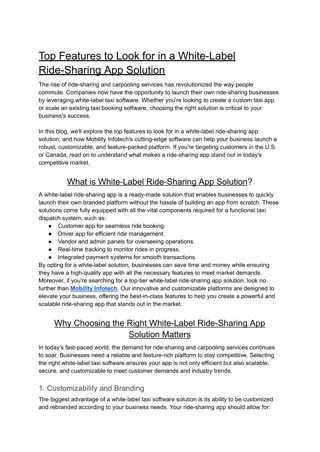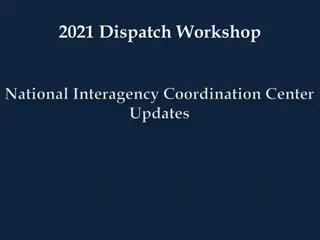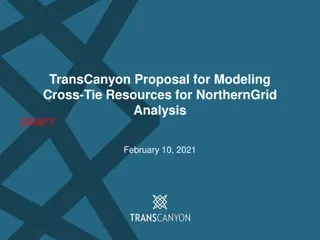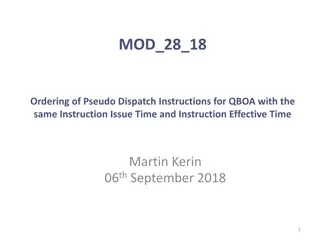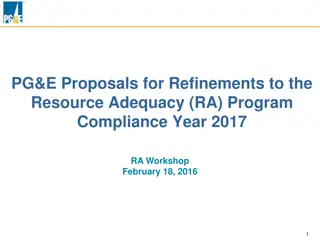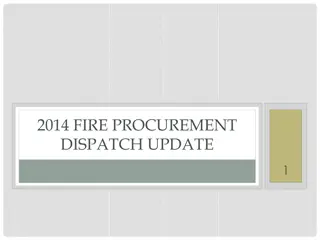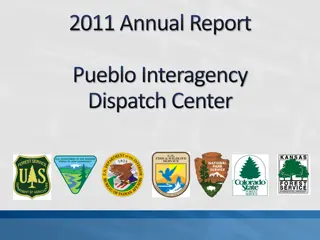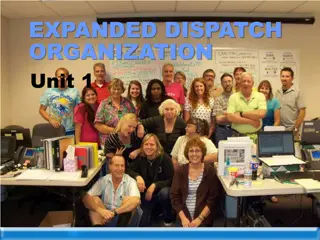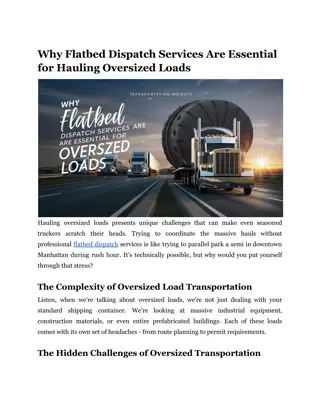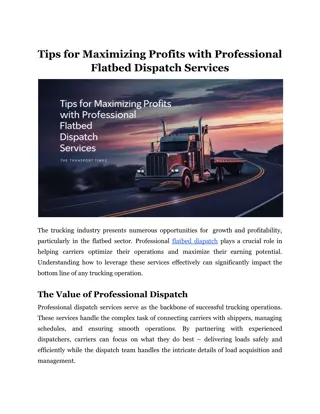Scheduling & Dispatch: Stakeholder Engagement
Scheduling & Dispatch Programme, functional changes, market arrangements, and stakeholder engagement. Join the workshop to stay informed and engage in discussions.
0 views • 29 slides
Understanding Management Information Systems (MIS) in Business Organizations
Explore the world of Management Information Systems (MIS) in business settings, covering topics such as sales, supplier management, purchase orders, forecasting, stock details, customer orders, dispatch instructions, financial transactions, and more. Gain insights into the role of MIS in bringing or
2 views • 38 slides
Efficient Resource Mobilization and Management Strategies by Dr. Abraham Maliet Mamer
This content discusses efficient resource mobilization and management strategies, emphasizing the importance of understanding the typical cycle of resource regime, defining resources, identifying resources, and mobilizing resources effectively. It provides insights into resource allocation methodolo
1 views • 12 slides
Understanding Virtual Incident Procurement (VIPR) in Government Agencies
Virtual Incident Procurement (VIPR) is a web-based system used by the United States Department of Agriculture, Forest Service (USDA-FS) for incident procurement. It includes Incident Blanket Purchase Agreements (I-BPA) that allow Contracting Officers to create, award, and manage solicitation and agr
3 views • 37 slides
Bus Dispatch Software Market Size, Scope And Forecast Report
The global bus dispatch software market size was USD 552.9 Million in 2023 and is likely to reach USD 1479.1 Million by 2032, expanding at a CAGR of 10.5% during 2024\u20132032.
0 views • 6 slides
Comprehensive Overview of UNRMS Framework and Principles
UNRMS (UN Resource Management System) aims to promote sustainable resource management globally through innovative frameworks and principles. It encompasses various natural resources and supports sustainability at different scales. Stakeholders can use it to assess projects against environmental, soc
5 views • 10 slides
Leveraging Affordable Technology for Addressing Staffing Challenges in Emergency Services
Discover how automated dispatch processes can help emergency service centers manage dispatcher workload, improve response times, and enhance situational awareness. Learn about the benefits of integrating affordable technology to streamline operations and ensure faster, safer alerting for fire statio
0 views • 14 slides
Understanding Managed Elasticsearch for Dispatch Services
Discover the benefits of using Managed Elasticsearch for dispatch services, including efficient search capabilities, log searching, and course searching. Learn about Elasticsearch's distributed search and analytics engine, built upon Apache Lucene, with a RESTful interface. Explore the challenges fa
0 views • 12 slides
Incorporating Solar Assets into Do-Not-Exceed Dispatch: Project Update
This update covers the approval and timeline of incorporating solar assets into the Do-Not-Exceed (DNE) dispatch by ISO New England. The NEPOOL Participants Committee approved the project on September 1, 2022. Tariff changes were filed with FERC on November 30, 2022, and were accepted with an effect
1 views • 10 slides
Forward Capacity Market Resource Capacity Accreditation Discussion
Discussion on improvements to resource capacity accreditation in the Forward Capacity Market to support a reliable, clean-energy transition by accrediting resource contributions effectively as the resource mix evolves. Covers conceptual design, stakeholder schedule, and review of proposed enhancemen
0 views • 61 slides
Population Resource Regions and Zelinsky's Classification
Geographers have long studied the relationship between population growth and resource adequacy, leading to the concept of Population Resource Regions (PRR) by W. Zelinsky. Zelinsky identified five types of PRR based on population-resource ratios, ranging from Type A with high resource utilization po
0 views • 8 slides
Introduction to Resource Management in Construction Industry
The construction industry operates in a dynamic environment with time, money, and resource constraints. This chapter focuses on resource management, optimization methods, and applications in construction. It covers the definition of resources, types of resources, and the importance of optimization i
2 views • 15 slides
Overview of Standard Method of Resource Scheduling for Effective Project Management
Resource Schedule Documents (RSD) prepared using Standard Method of Resource Scheduling 1 (SMRS 1) facilitate efficient allocation, planning, and management of resources. The RSD includes sections detailing employer and contractor responsibilities, material issues, method statements, and charges. SM
0 views • 9 slides
Joint Dispatch/Systems Focus Group Meeting - Agenda and Attendees
Detailed agenda and list of attendees for the Joint Dispatch/Systems Focus Group meeting on 22nd October 2018 at AEMO Office in Brisbane. The meeting included discussions on transition to 5-minute bidding, dispatch instruction timing, zero fixed load, and more. Attendees represented various companie
1 views • 48 slides
Understanding the Economic Problem: Choices and Resource Allocation
This comprehensive study covers key concepts in economics, such as the economic problem, cost-benefit analysis, resource scarcity, production possibilities, and distribution of resources. It delves into the importance of costs and benefits in decision-making, categorizing them, and identifying varia
0 views • 16 slides
Dispatch Radio 2021: Updates, Operations, and Why Radio Matters
Discover the latest updates and operations of Dispatch Radio in 2021, including digital repeaters, radio consoles, and extended attack equipment. Explore the importance of using radios for communication and the unique benefits they offer in various scenarios. Concluding with contact details for ques
0 views • 8 slides
Understanding the Importance of 4-H Natural Resource Clubs for Youth Development
Exploring the significance of 4-H Natural Resource Clubs through insights from surveys conducted among 4-H members, Extension Educators, and Natural Resource Professionals. The data highlights motivations, barriers, and suggested resources to enhance participation in natural resource projects, empha
0 views • 17 slides
Moving Instructional Tasks to Teacher Resource Link - Richard Woods, Georgia's School Superintendent
Richard Woods, Georgia's School Superintendent, is transitioning ELA and Math instructional tasks for students with significant disabilities from the Resource Board to the Teacher Resource Link (TRL) accessible through SLDS. Science and Social Studies items will soon be available on TRL as well. The
1 views • 12 slides
Update on IMS Program Activities
Karen Hale, Assistant Center Manager at Columbia Cascade Dispatch Office, shares updates on IMS program activities. The IMS application for 2014 was released before the furlough, with training scheduled for March 31 to April 4. New AD hiring for IMS training has been initiated, and procedures for IM
0 views • 13 slides
Zorua: A Holistic Resource Virtualization in GPUs Approach
This paper presents Zorua, a holistic resource virtualization framework for GPUs that aims to reduce the dependence on programmer-specific resource usage, enhance resource efficiency in optimized code, and improve programming ease and performance portability. It addresses key issues such as static a
0 views • 43 slides
Overview of 2012 Fire Season in Pueblo Zone
The 2012 fire season in Pueblo Zone saw intense fire activity, with notable fires in Kansas and Colorado causing significant damage and casualties. Federal agencies and local dispatch centers worked together to manage the wildfires, evacuating thousands of people and deploying resources effectively.
0 views • 51 slides
Fair and Efficient Multi-Resource Sharing in Social Networks
This paper explores the concept of fair and efficient multi-resource sharing in social networks, presenting a credit market-based framework for charge-free computing resource sharing. It addresses the challenges of escalating data volumes and the need for collaborative resource allocation strategies
0 views • 21 slides
CloudScale: Elastic Resource Scaling for Multi-Tenant Cloud Systems
CloudScale is an automatic resource scaling system designed to meet Service Level Objective (SLO) requirements with minimal resource and energy cost. The architecture involves resource demand prediction, host prediction, error correction, virtual machine scaling, and conflict handling. Module 1 focu
0 views • 37 slides
Illinois Municipal League Annual Conference on 9-1-1 Dispatch System Consolidation
Explore the benefits and framework for consolidating 9-1-1 dispatch systems in Illinois, including reasons for consolidation, authority under state laws, and legislative updates. Learn about cost savings, resource sharing, and compliance mandates driving regional consolidations. Discover how intergo
0 views • 37 slides
White-Label Taxi Software for Efficient Fleet Management
Mobility Infotech provides ride-hailing and taxi dispatch software designed to streamline operations. Our white-label solutions offer real-time tracking, automated dispatch, and more.
2 views • 3 slides
White-Label Taxi Software for Efficient Fleet Management
Mobility Infotech provides ride-hailing and taxi dispatch software designed to streamline operations. Our white-label solutions offer real-time tracking, automated dispatch, and more.
1 views • 4 slides
2021 Dispatch Workshop Summary and Resources
This document outlines details regarding air tankers, scoopers, lead planes, helicopters, flight strips, infrared program, and large transportation related to the 2021 Dispatch Workshop. Information includes specific aircraft availability, contracts, use cases, and other relevant operational details
0 views • 13 slides
Proposal for Modeling Cross-Tie Resources for Northern Grid Analysis
The TransCanyon proposal outlines the Cross-Tie Transmission Project, a 213-mile, 1500 MW, 500 kV HVAC line aiming to strengthen electrical interconnections and facilitate power transfers between different regions. The NorthernGrid proposal involves modeling base cases to study resource dispatch, fo
0 views • 6 slides
Ordering of Pseudo Dispatch Instructions for QBOA
This document outlines the specific order in which Pseudo Dispatch Instructions (DIs) are to be arranged for QBOA in scenarios where multiple instructions are issued simultaneously. The order prioritizes certain instructions to maintain consistency and alignment with system implementation rules.
0 views • 11 slides
Proposal to Enhance Qualifying Capacity Calculation for Pre-Dispatch Resources
PG&E has proposed a modification to the Qualifying Capacity calculation for pre-dispatch resources, aiming to base the NQC on economic bids and self-schedules rather than CAISO-scheduled MWs. This adjustment would better reflect the value of capacity offered by various facilities, encourage economic
0 views • 7 slides
Fire Procurement and Dispatch Update - 2014
This update provides information on fire procurement and dispatch procedures for 2014. Topics include ordering considerations, VIPR resource management, aviation resources status, VIPR and enterprise updates, laptop renewals, and upcoming training schedules for fire purchasing. It covers a range of
0 views • 19 slides
2011 Annual Report of Pueblo Interagency Dispatch Center
The 2011 season was exceptionally active for the Pueblo Interagency Zone, experiencing 499 fires and 258,633 acres burned. The center managed various incident types, collaborated with different regions, and set records in mobilization and support. Notable initiatives included dispatch process improv
0 views • 48 slides
Dispatch Organizations and Expanded Operations Overview
Explore the purpose, structure, and key components of dispatch organizations, including established and expanded units. Learn about dispatch ordering channels, unique language, unit ID components, roles and responsibilities, and the importance of documentation. Discover the primary missions of dispa
0 views • 23 slides
Why Flatbed Dispatch Services Are Essential for Hauling Oversized Loads
Discover why flatbed dispatch services are crucial for safely hauling oversized loads. Learn the key benefits and how they ensure efficient transport.
1 views • 6 slides
How to Choose the Best Flatbed Dispatch Service for Your Trucking Business_
Discover how to find the right flatbed dispatch service to boost your trucking business. Get tips on selecting a reliable partner for your needs.
1 views • 6 slides
Modeling Non-Energy Dispatch Actions in SEM
This proposal advocates for modeling non-energy dispatch actions in the energy market system (SEM). It highlights the importance of accounting for energy consumption in modes not currently modeled in SEM, such as synchronous compensator mode. Implementing specific dispatch instructions for non-energ
0 views • 4 slides
Tips for Maximizing Profits with Professional Flatbed Dispatch Services
Boost your logistics business with expert flatbed dispatch tips. Discover how to maximize efficiency and increase profits seamlessly
0 views • 6 slides
Common Challenges in Truck Dispatch and How to Overcome Them
Struggling with truck dispatch issues? Learn practical tips to overcome delays, communication gaps, and route inefficiencies.\n
0 views • 5 slides
Tips for Streamlining Truck Dispatch Operations
Discover practical tips to optimize truck dispatch operations, reduce delays, and improve overall fleet efficiency.\n
0 views • 5 slides
How to Choose the Right Box Truck Dispatch Company
Learn how to select the right box truck dispatch company to ensure efficient, reliable service for your business needs. Find tips and key considerations\n
0 views • 4 slides

